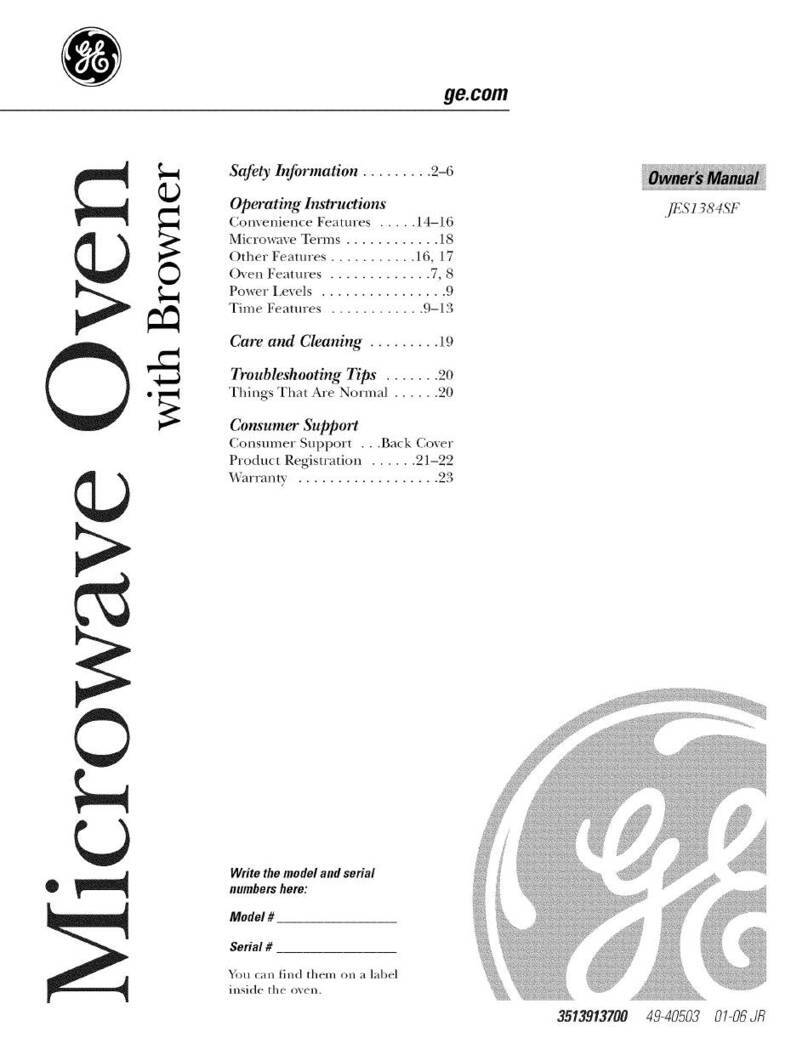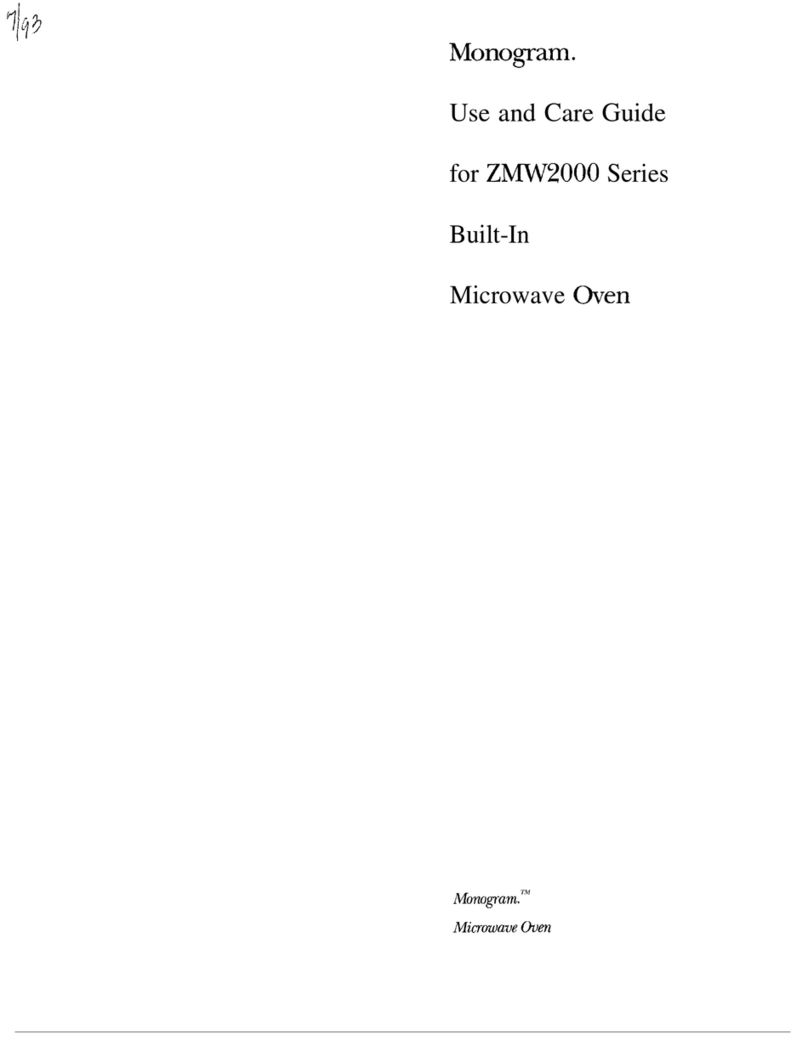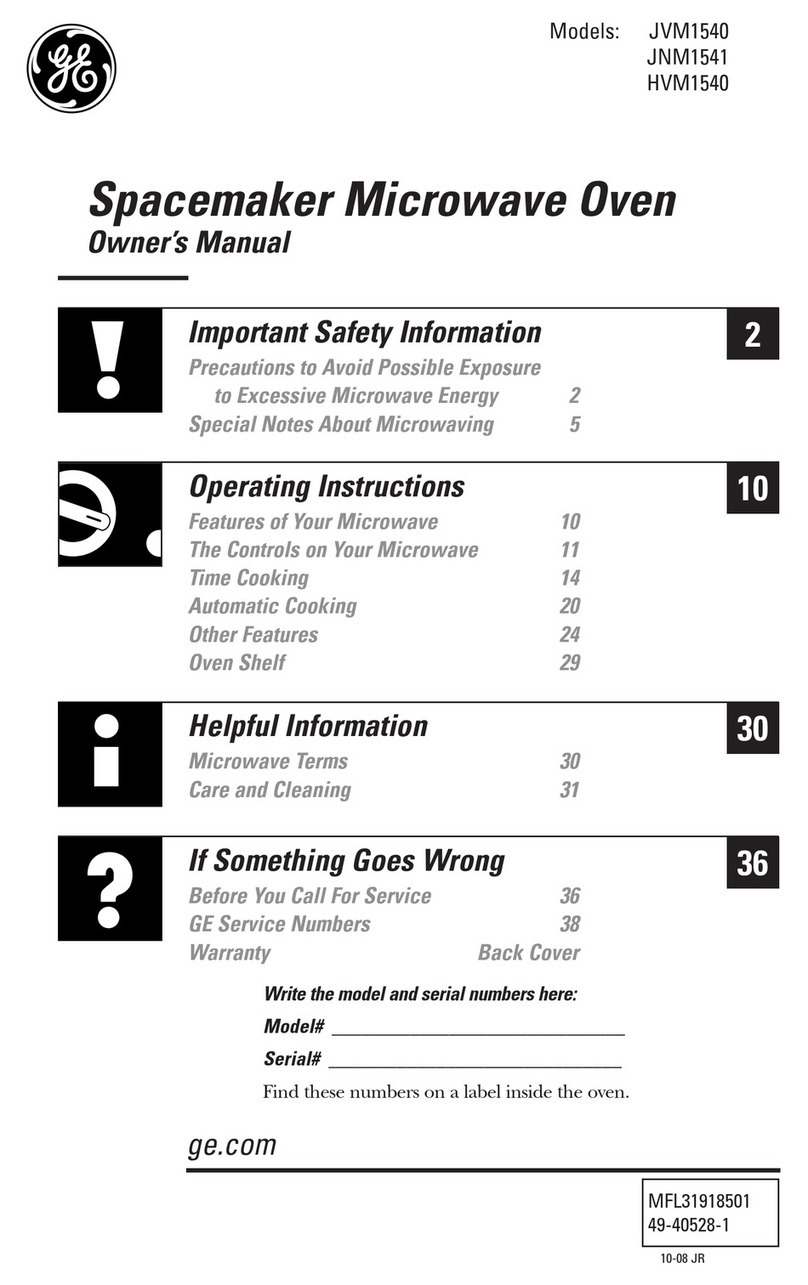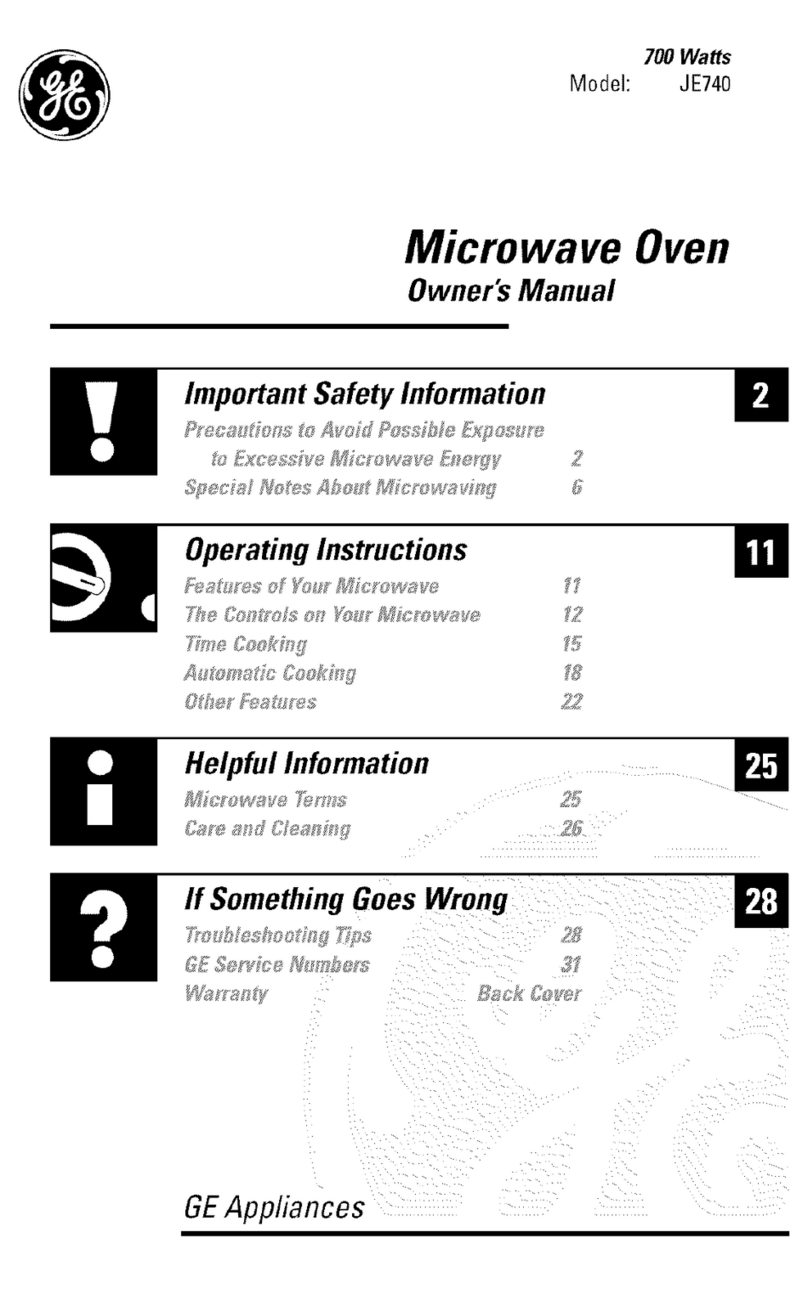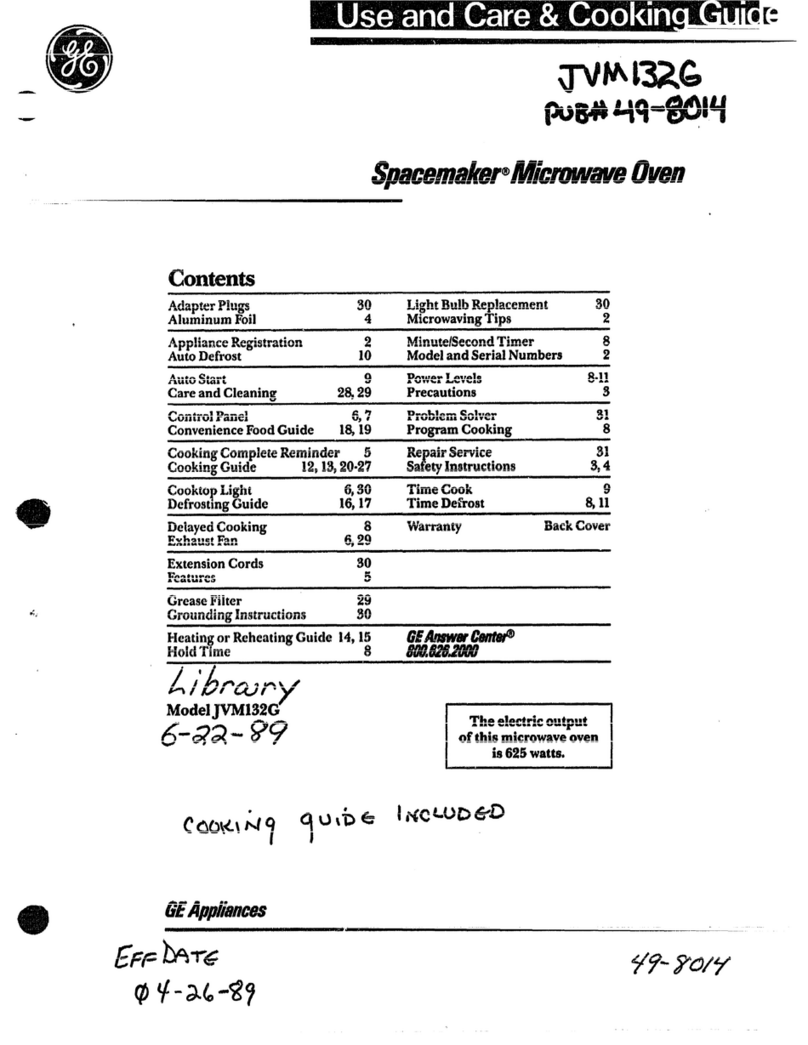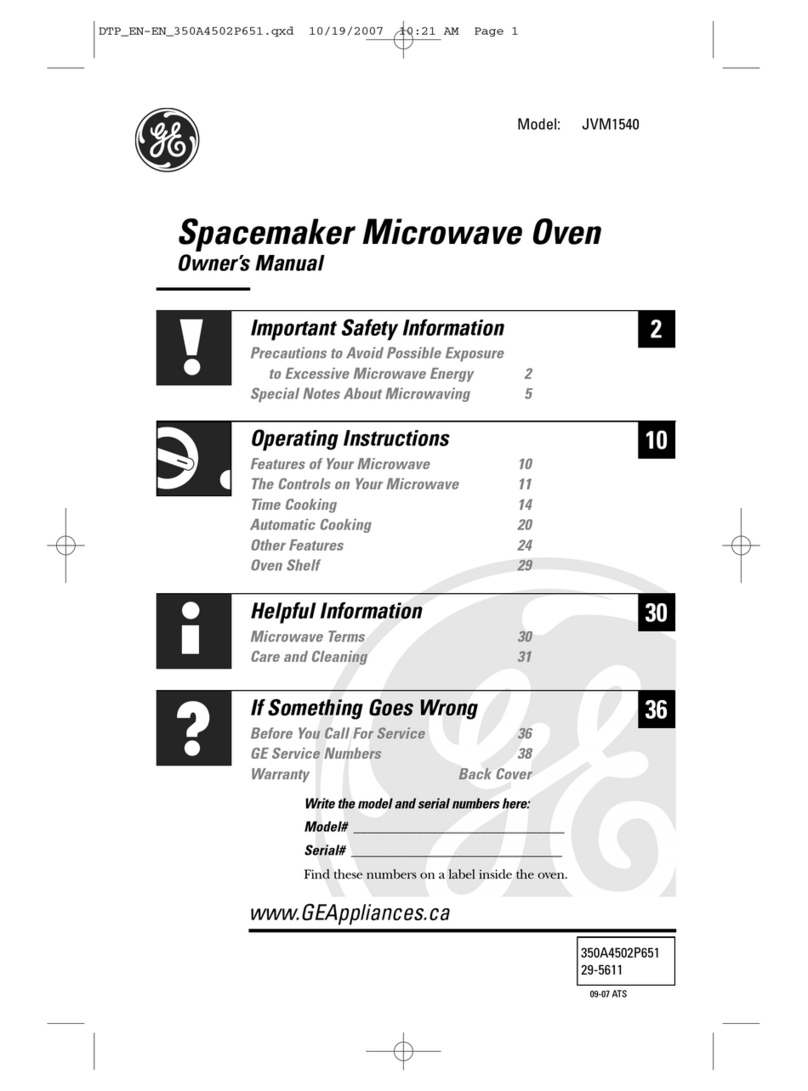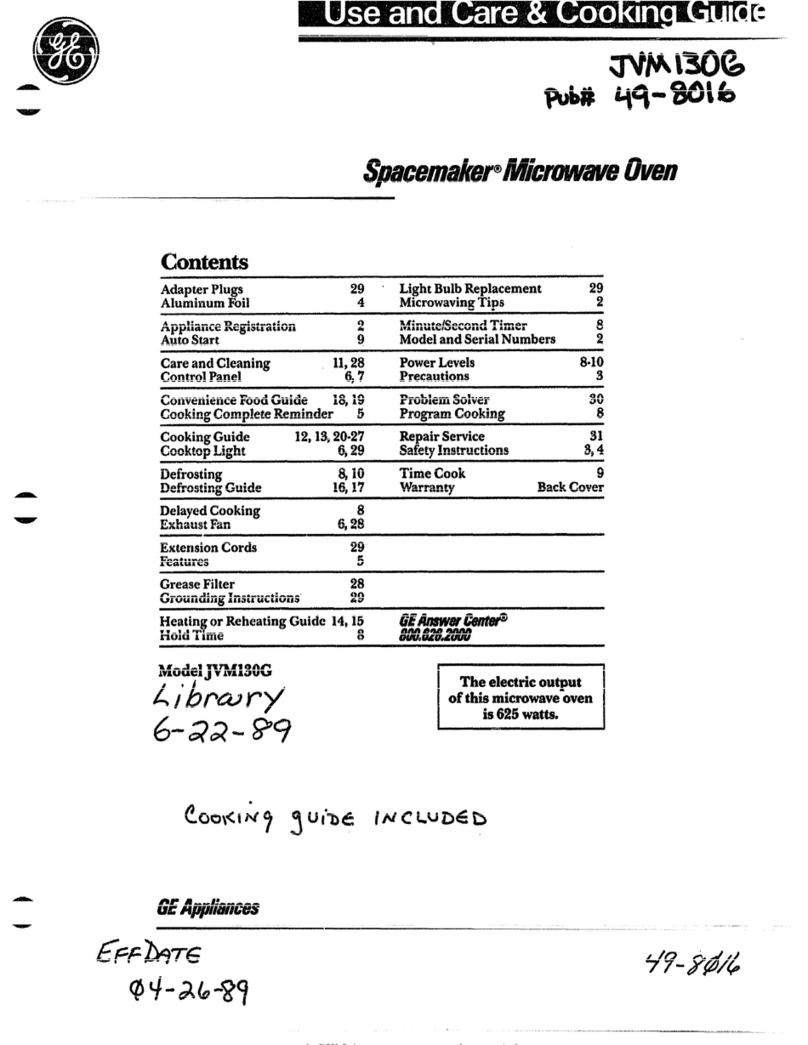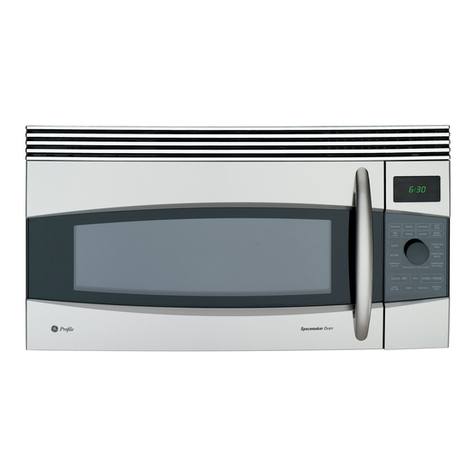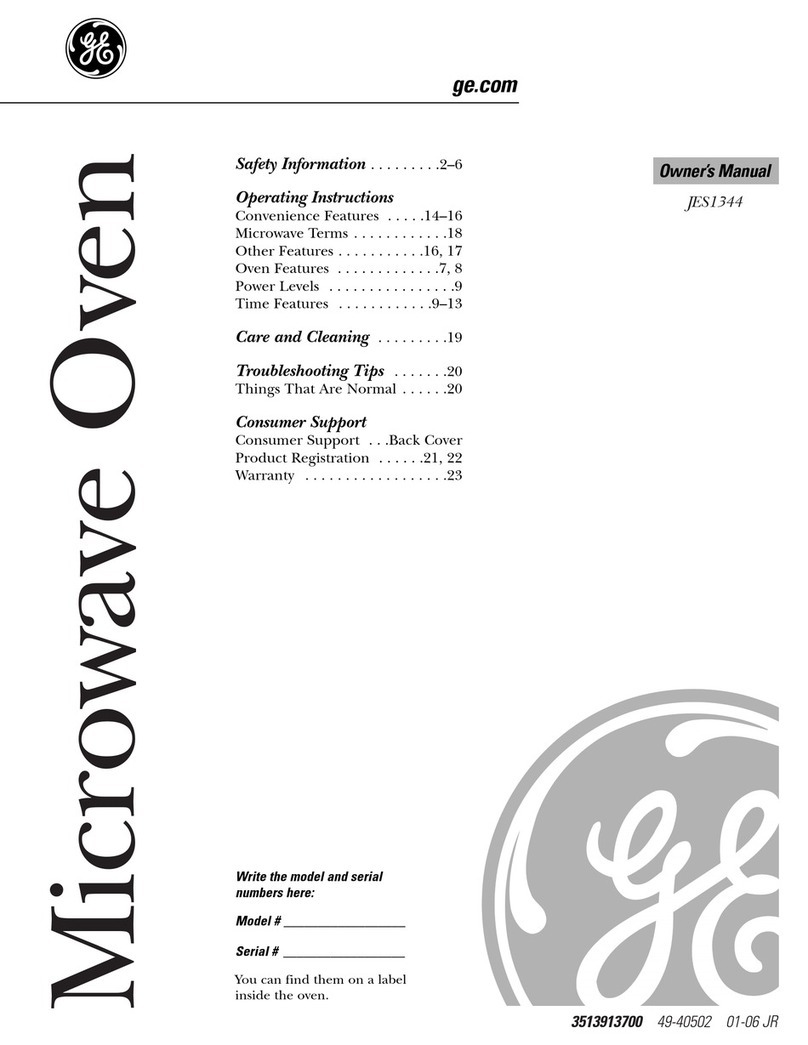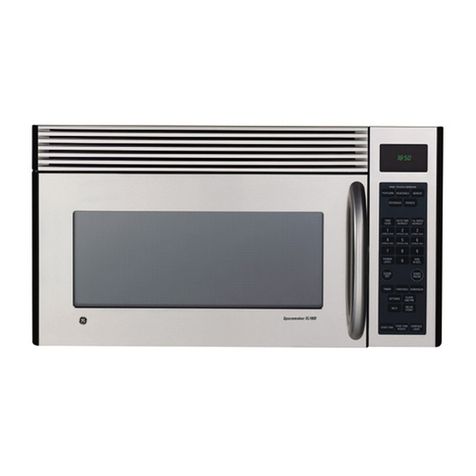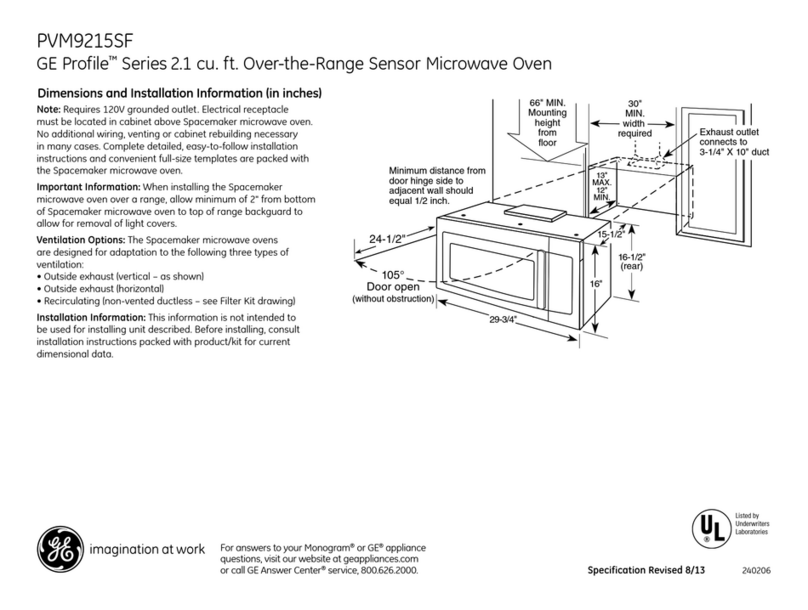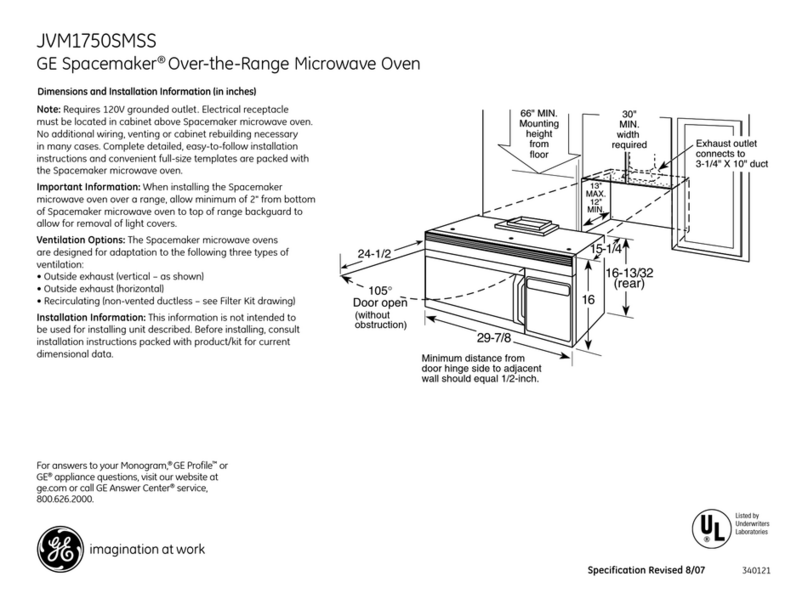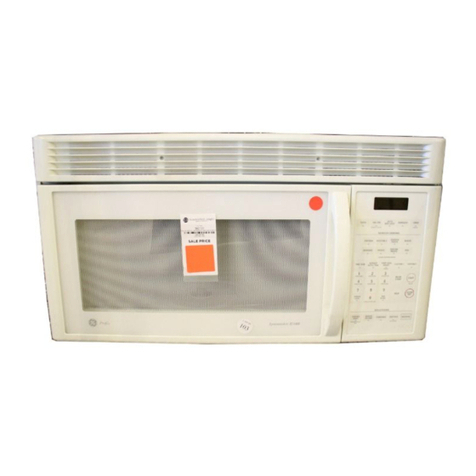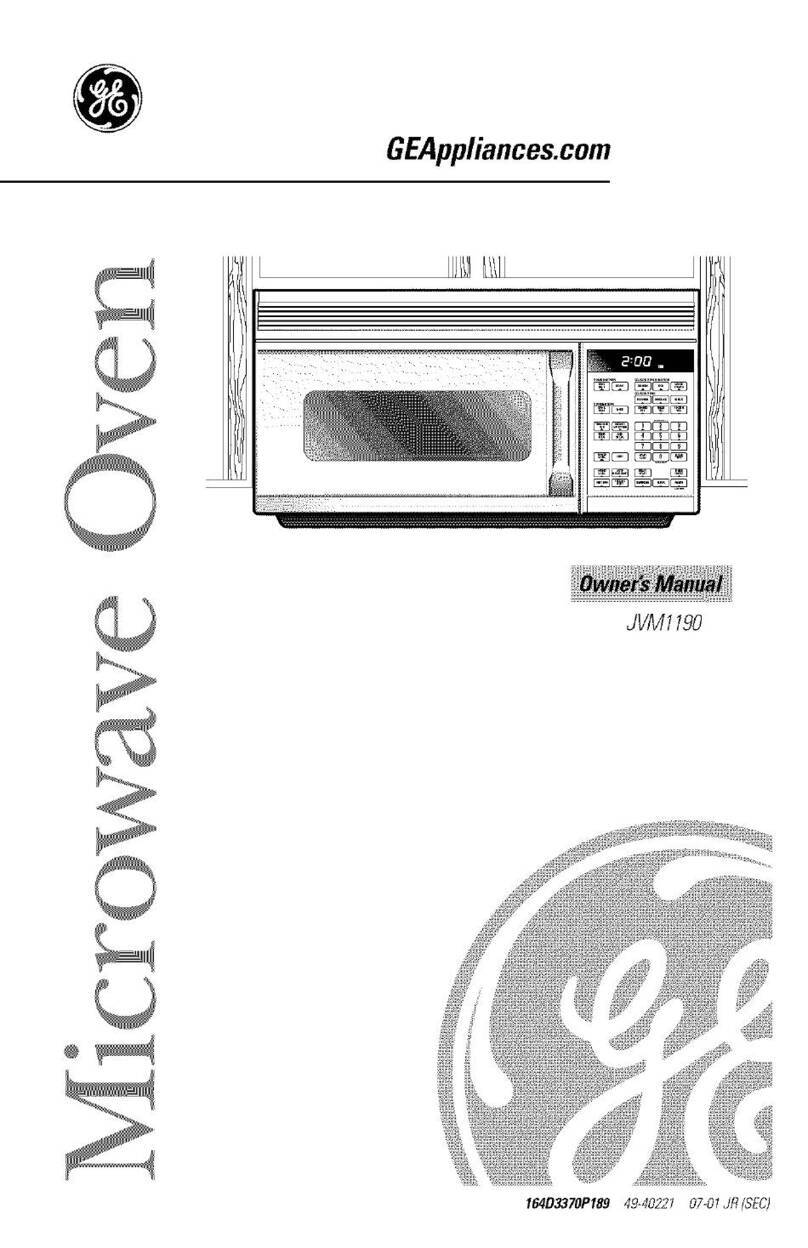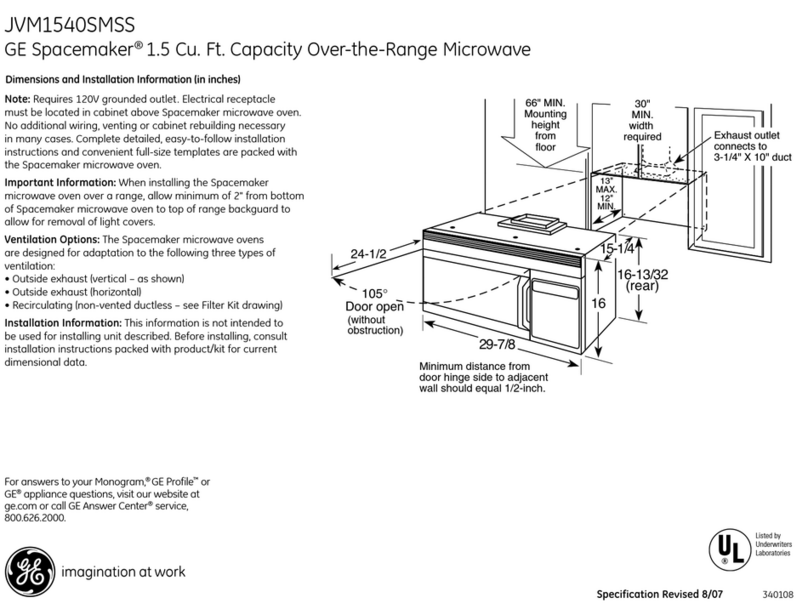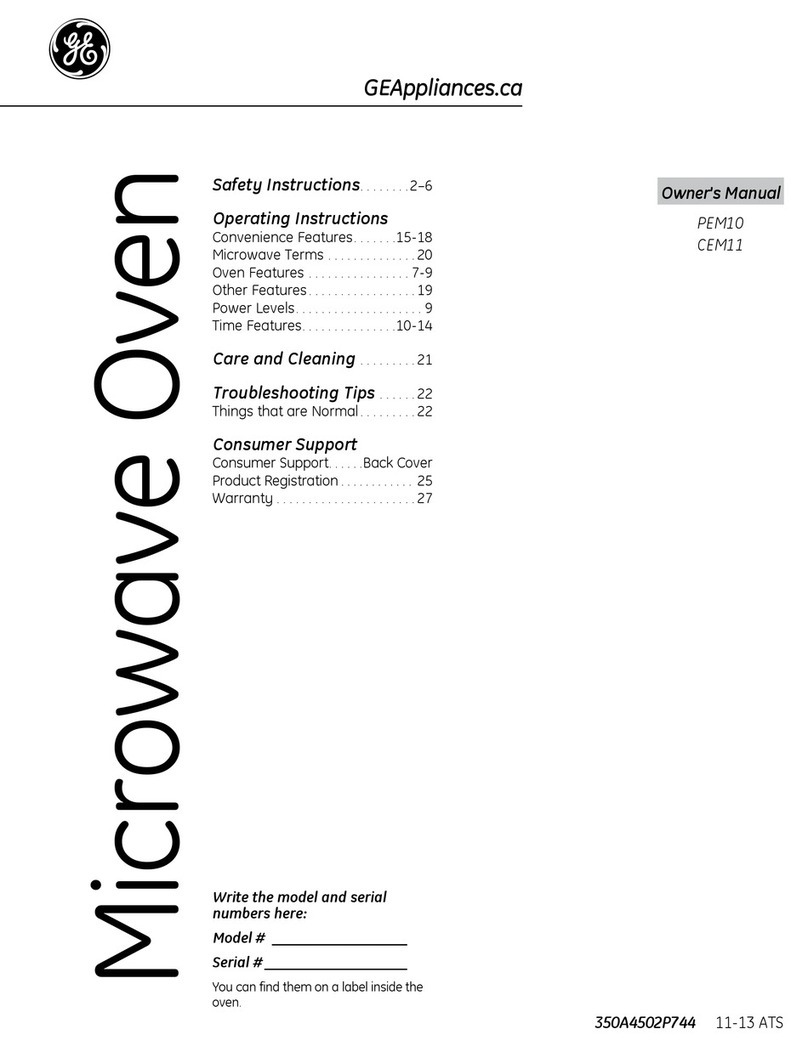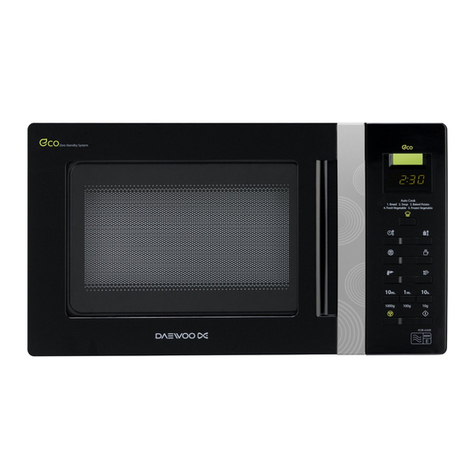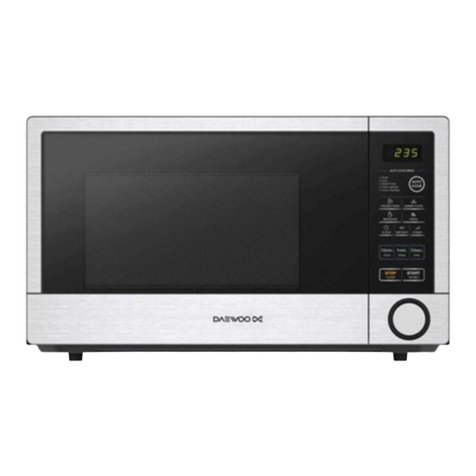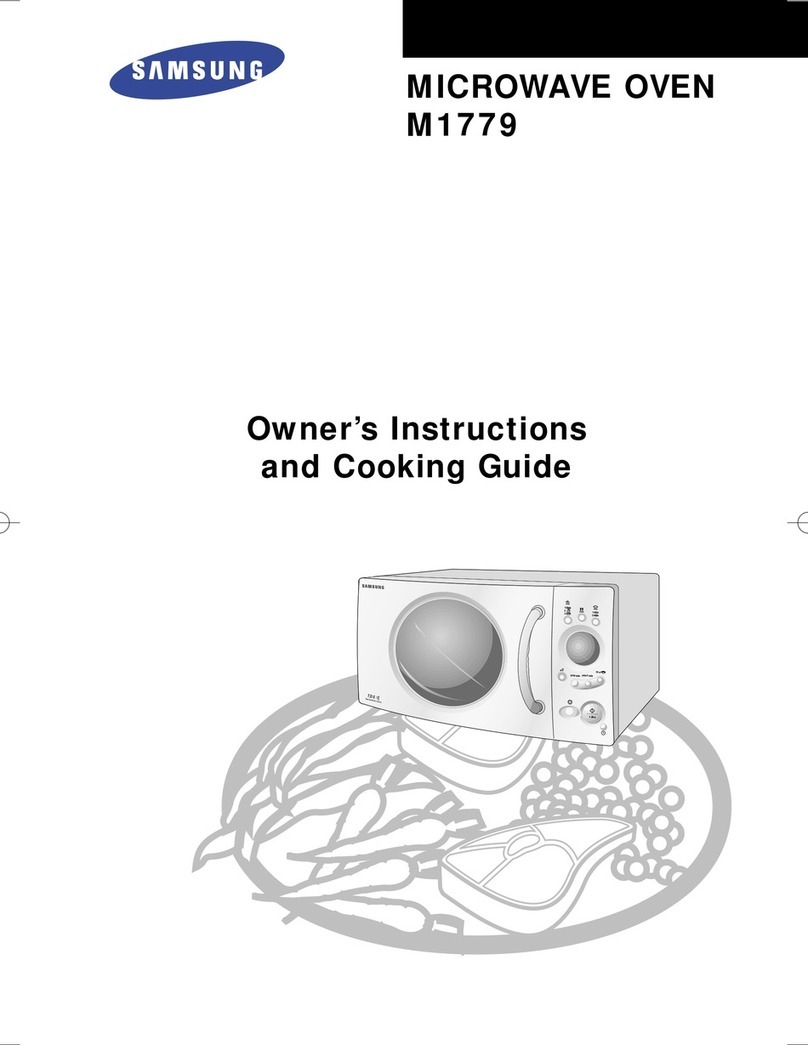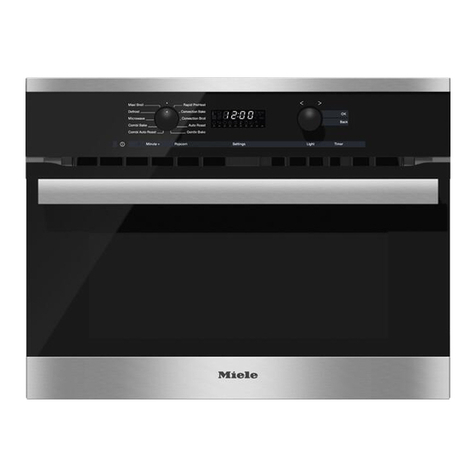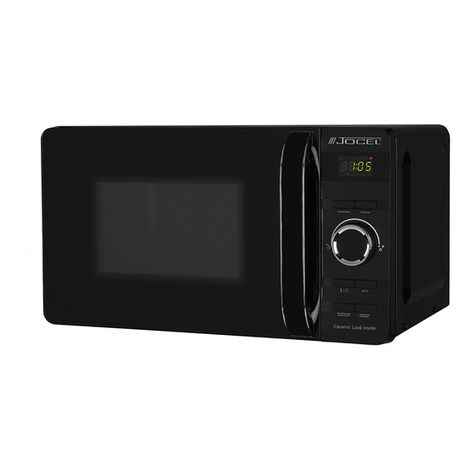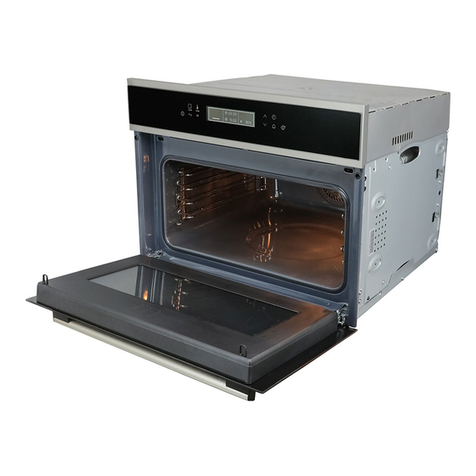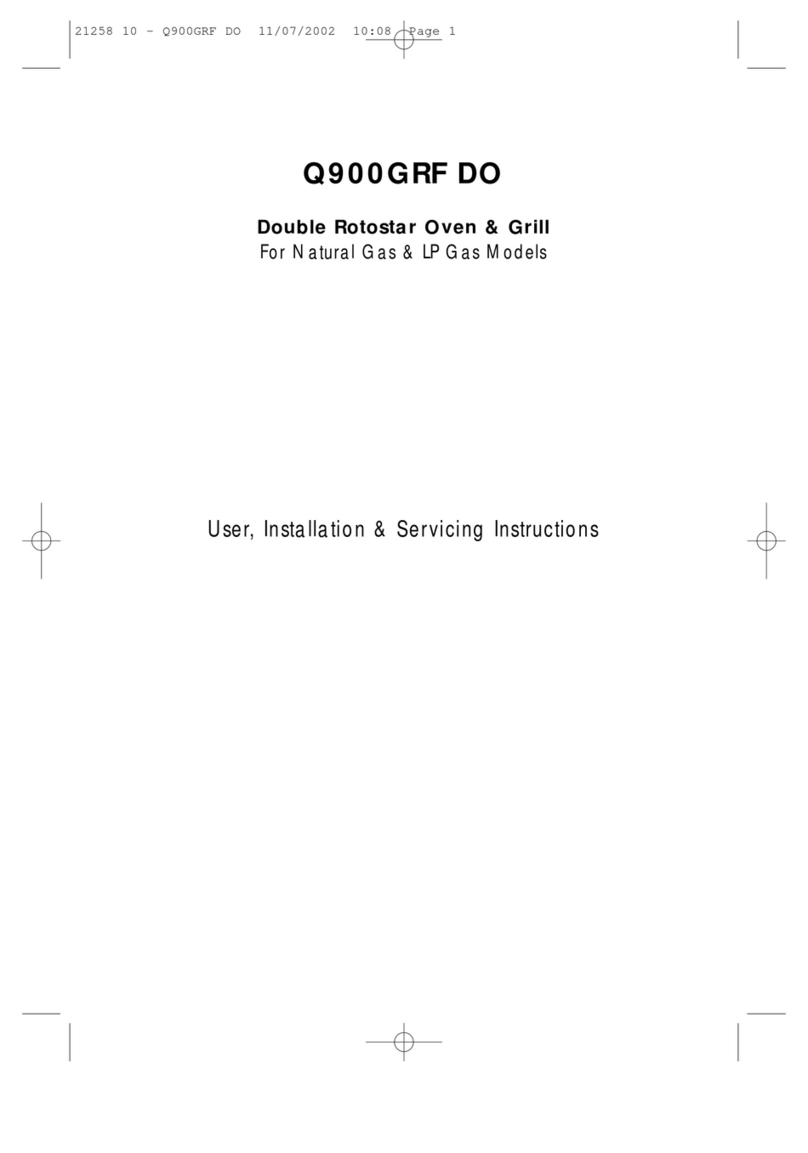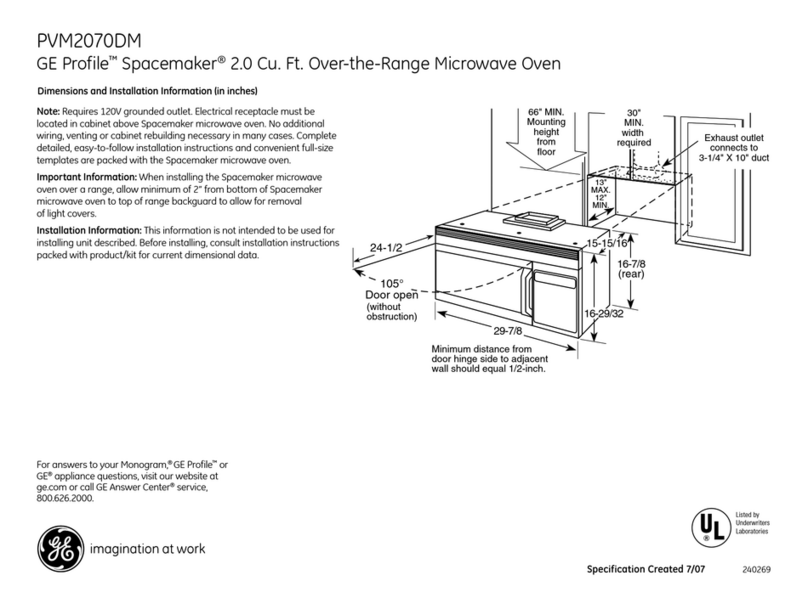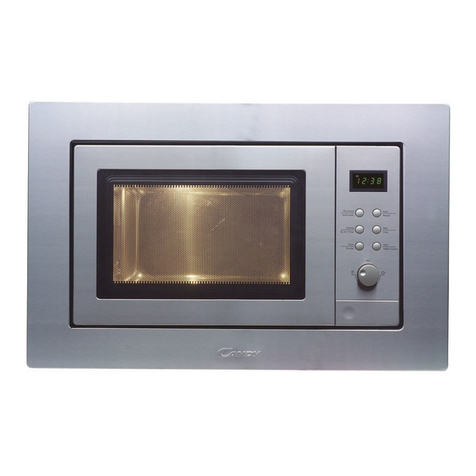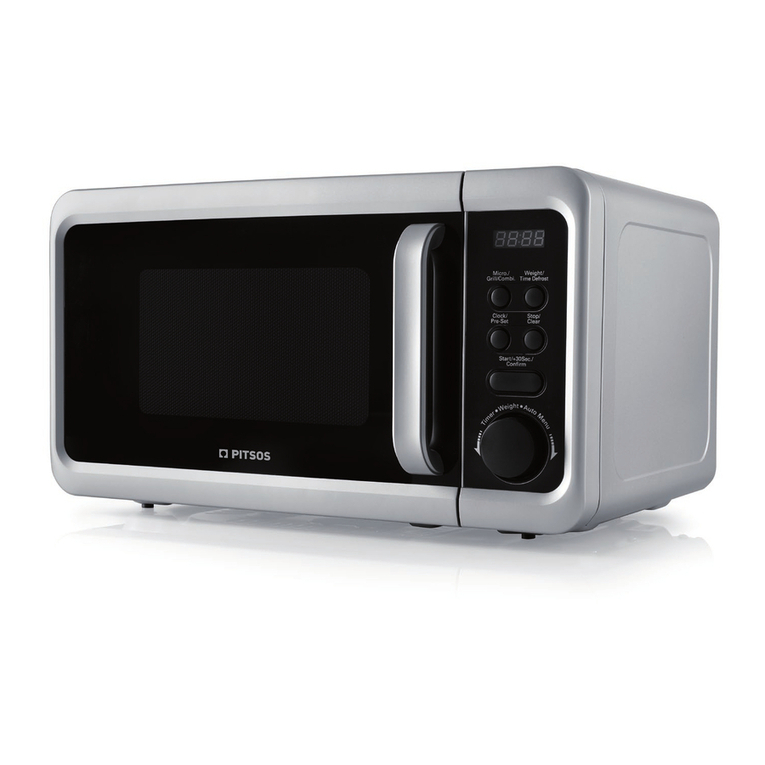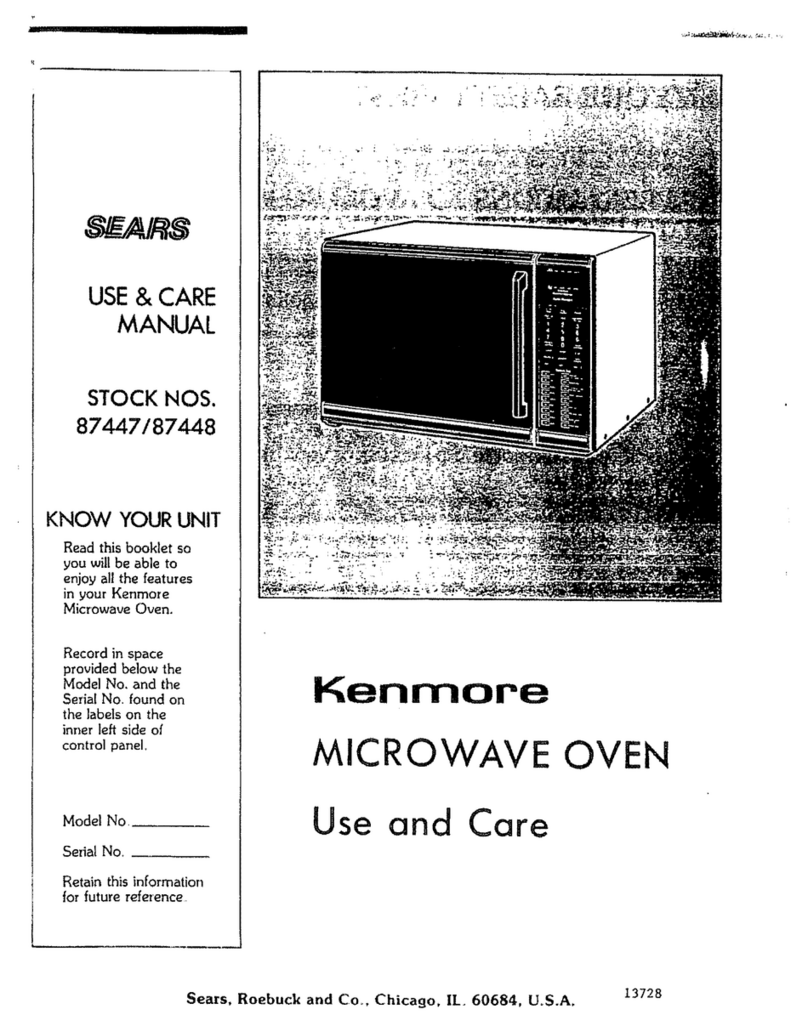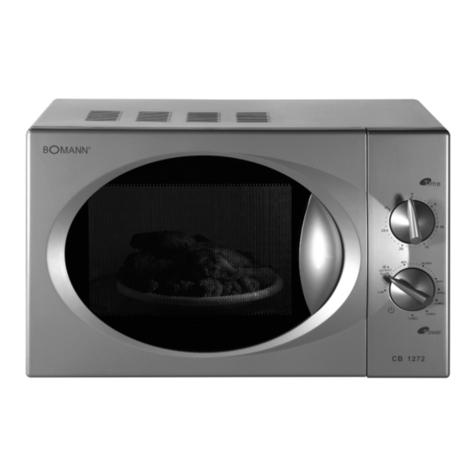
*Readand follow the specific
“PRECAUTK3NS TO AVOID
POSSIBLE EXPOSURETO
EXCESSIVEMICROWAVE
ENERGY” found cmpage 2.
@TOreduce the risk of fire in
the oven cavity:
—Do not overcook food. Care-
fully attend appliance if paper,
plastic, or other combustible
materials are placed inside the
oven to facilitate cooking.
—Remove wire twist-ties from
paper or plastic bags before
placing bag in oven.
—Do not useyour microwave
oven to dry newspapers.
—Do not pop popcorn in your
microwave oven unless in a
special microwave popcorn
accessory or unless you use
popcorn labeled for use in
microwave ovens.
—Do not operate the oven while
empty to avoid damage to the
oven and the danger of fire. if by
accident the oven should run
empty aminute or two, no harm
is done. However, try to avoid
operating the oven empty at all
times—it savesenergy and pro-
longs life of the oven.
—H materials inside the oven
should ignite, keep oven door
closed, turn oven off, and dis-
connect the power cord, or shut
off power at the fuse or circuit
breaker panel.
@Some products such as
whole eggs and sealed cori-
tainers—for example, closed
glass jars—may explode and
should not be heated in this
oven.
@Avoid heating baby food in
glass jars, even without their
iids; especially meat and egg
mixtures.
*See door surface cieaning
instructions on page 48.
49 Don’t defrost frozen
ages in narrow necked i3ever-
bottles;
especially carbonated ones.
Evenif the container is opened,
pressure can build up. This can
cause the container to burst,
resulting in injury.
*(k metalonly as directed in
Cookbook, Foilstrips as usedon
meatroastsare helpfulwhen used
asshowninCookbook.
TVdinners maybe microwaved
infoiltrays lessthan 3/4” high;
removetop foilcoverand return
trayto box.When using metalin
the microwaveoven,keep metal
(other than metal shelf) at least
“iinch away from skies of oven.
eCooking utensils may
become hot becauseof heat
transferred from the heated
food. This is especially true if
plastic wrap has been covering
the top and handles of the
utensil. Potholders may be
needed to handle the utensil.
eSometimes, the oven floor
can become too-hot to touch.
Be careful touching the floor
during and after cooking.
eDo not use any thermometer
in food you are microwaving
unless that thermometer is
designed or recommended for
use in the microwave oven.
eRemove the temperature
probe from the oven when not
using it to cook with. If you leave
the probe inside the oven without
inserting it in food or liquid, and
turn on microwave energy, it can
create electrical arcing in the
oven, and damage oven walls.
eBoiling eggs (in and out of
sheil) is not recommended for
microwave cooking. Pressure
can build up inside egg yolk and
may cause it to burst, resulting
in injury.
69 Foods with unbroken outer
“skin” such as potatoes, hot
dogs or sausages,tomatoes,
apples, chicken livers and other
giblets, and eggs (seeabove)
should be pierced to allow
steam to escape during cooking.
5
-— --——
IS LJtensik+Plastic
utensils designed for microwave
cooking are very useful, but
should be used carefully. Even
microwave plas!!c may not be as
tolerant of overcooking condi-
tions as are glass or ceramic
materials and may soften or
char if subjected to short periods
of overcooking. in longer expo-
sures to overcooking, the food
and utensils could ignite. For
these reasons:1) LJsemicro-
wave plastics only “and use
them” in strict compliance with
the utensil manufacturer’s
recommendations. 2) Do not
subject empty utensils to micro-
waving. 3) Do not permit children
to use plastic utensils without
complete supervision.
@I“B43iiable”cooking pouches
and tightly closed plastic bags
should be slit, pierced or vented
as directed in Cookbook. If they
are not, plastic could burst dur-
ing or immediately after cooking,
possibly resulting in injury. Also,
plastic storage containers should
beat least partially uncovered
becausethey form atight seal.
When cooking with containers
tightly covered with plastic wrap,
remove covering carefully and
direct steam away from hands
and face.
@th(? of the ~()&f~in~ ~~T’~TM
shelf accessory. (Seeyour Cook-
book for proper use.)
—Remove the shelf from oven
whan not in use.
—Do not store or cook with
shelf on floor of oven. Product
damage may result.
—Use potholders when handling
the shelf and utensils. They may
be hot.
—-Donot use microwave
browning dish on shelf. The
shelf could overheat. Use of
shelf with Automatic Cooking
feature is not recommended.
(continued next page)
-J
-v.
EBm6w.,
—
—-
—.
—1
E
—
—–
~
—r
—.
—
—
—
—
F15&ac—
-.
—
—
——
—–
—
—
—r - --
—,
——
..—-

